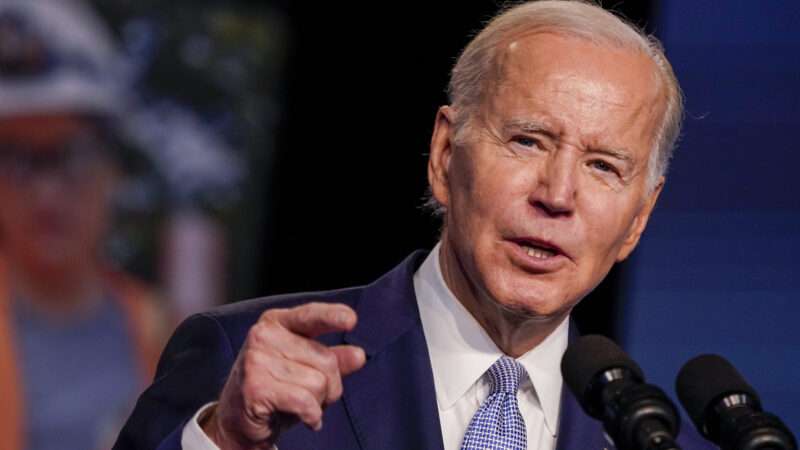
One of the very first things President Joe Biden did after taking the oath of office was to order federal agencies to revamp the way they evaluate the costs and benefits of regulations.
It went largely unnoticed amid the flurry of executive orders in Biden's first days, but that January 20, 2021, memo to the heads of departments and executive agencies signaled the administration's intention to rev up the regulatory state by counting "non-quantifiable" benefits of new regulations. As Reason reported at the time, the memo made clear that the new regulatory framework would serve "as a tool to affirmatively promote regulations."
It took more than two years for the other shoe to drop, but earlier this month it did. In an executive order signed on April 6, Biden fleshed out the details of how the new regulatory regime will operate. There are three major changes.
First, the executive order changes the threshold for what counts as an "economically significant" regulation from $100 million to $200 million—and orders the new, higher threshold to continue rising with inflation. Because regulations deemed to have economically significant costs are subject to additional layers of scrutiny before being approved, this change would expand the number of regulations that could be approved without that additional oversight.
It's also a bit laughable to declare that a new regulation costing $199 million is somehow not economically significant—but at least it will ease the burden on the poor put-upon bureaucrats responsible for drafting those rules. About time someone thought of them.
Secondly, Biden's new rules instruct federal agencies to "promote equitable and meaningful participation by a range of interested or affected parties, including underserved communities." This push for greater equity is so complicated that it requires a separate 10-page memo explaining how to implement it. That includes new guidance for how the White House's Office for Information and Regulatory Affairs should "facilitate the initiation of meeting requests" from groups that have "not historically requested such meetings, including those from underserved communities."
It's certainly easy to roll one's eyes at the federal government's equity mess, but getting more feedback from groups that could potentially be affected by federal regulations is not necessarily a problem—even though it will surely include calls for greater regulation in many cases. At the very least, adding more steps to the approval process might slow the gears of the regulatory state.
Finally, Biden's executive order also changes how regulations will be weighed by the federal agencies approving them, including the foreshadowed changes to how costs and benefits are calculated. Probably the most significant change is a new time horizon for the consideration of regulatory costs, including a new formula for calculating costs and benefits that will extend over multiple generations—seemingly an attempt to make climate regulations appear less costly.
"This will have the tendency to count more benefits and push more regulatory initiatives into the black," writes Douglas Holtz-Eakin, the former director of the Congressional Budget Office who now serves as president of the American Action Forum, a free market think tank. That's because regulatory costs are generally more immediate than the potential benefits, and the new rules will apply a new "discount rate" that extends the costs over a longer period of time.
In effect, this is a decision that shows the Biden administration's willingness to impose costs today or in the near future for benefits that won't materialize for years or decades. Advocates for more aggressive government action against climate change might see this as a more accurate way to quantify the long-term costs and benefits of, say, limiting carbon emissions. But in the short term, it is also a way to make those policy changes come with a smaller price tag.
There's no objective standard for how to measure the costs and benefits of federal regulations, of course, so Biden is free to nudge the calculations in a new direction. And, as Holtz-Eakin points out, the new executive order stops short of Biden's Inauguration Day promise to include "non-quantifiable" benefits in the regulatory review process.
Even so, shifting how the federal regulatory state calculates the burdens it is forcing upon American businesses and consumers might be one of Biden's more significant contributions to the growth of government—even if it continues to fly under the radar.
The post Biden Is Pushing Federal Regulatory Powers Into Uncharted Territory appeared first on Reason.com.







